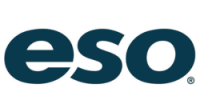Sponsored by ESO
Despite many paramedics reporting their organizations aren’t staffed sufficiently to answer all the emergency 911 calls in their service areas, the calls keep coming. Crews roll from one scene to another, doing their best to manage the demand, while restocking supplies and completing patient care reports.
Manual narratives: A costly bottleneck
An average patient care report can take 15 minutes to write manually – time that could be spent serving patients and helping the community. Beyond a time burden, entering data by hand allows inconsistencies to creep in, making it more difficult to compare data and inform patient care.
And from a bigger picture perspective, manual reports are siloed from the structured fields that drive NEMSIS compliance. An incomplete patient care narrative can complicate hospital handoffs, jeopardize patient safety, compromise quality assurance and delay billing.
The ESO fix: One-click patient narrative
Fortunately, there’s a solution that returns time and improves consistency. The new Auto-Generated Narrative feature in ESO Electronic Health Record (EHR) uses existing structured data entered by medics to build a patient care narrative. Once Auto-Generated Narrative is activated, first responders complete the digital patient chart, and then – with one click – generate the patient narrative, which must be reviewed and approved before finalizing.
The Auto-Generated Narrative feature harnesses the power of AI to streamline the documentation process, returning precious time while enabling coordinated care throughout the patient journey.
Approaching AI responsibly
While Auto-Generated Narrative for ESO EHR is a new function, it’s not one created in haste. ESO co-developed the AI solution with the people who actually use it – EMS providers, fire chiefs, clinicians and hospital leaders. And the company has made a commitment to only launch AI tools when the outcomes justify the technology, not the reverse.
Dr. Brent Myers, chief medical officer at ESO, noted, “At ESO, we are committed to being responsible, ethical and transparent as we walk through this artificial intelligence journey together.”
Measuring time savings
Data from more than 1,100 agencies using ESO Auto-Generated Narrative shows dramatic improvements:
- Up to 80% overall documentation-time reduction
- 30% faster record-lock times, accelerating billing and hospital data exchange
- Individual users report two-minute reviews instead of 15-minutes to write from scratch
Augmenting, not replacing, clinician analysis
ESO consulted a diverse range of healthcare professionals while developing the Auto-Generated Narrative feature to ensure alignment with real-world practices and challenges. The goal is strengthening provider support to improve patient care, never replacing human decision-making.
Chief Jeff Sadtler of West County Fire and EMS Protection District shared that his crews gain “about 20 minutes of time savings per report” by using ESO Auto-Generated Narrative. He added that the trained professionals remain hands on, reviewing every narrative before submission. “So far, I don’t think we’ve had one that hasn’t been touched,” Sadtler said.
Powering patient care narratives
ESO Auto-Generated Narrative is available to all current ESO EHR customers at no additional cost. The feature is completely optional and in order to activate it, it must be enabled through administrative settings. It’s accessible in EHR iOS, EHR Windows mobile and EHR Web.
The bottom line
Understaffed agencies need every spare minute for patient care. ESO Auto-Generated Narrative replaces time-consuming typing with a consistent, clinician-controlled patient narrative pulled directly from the ePCR.
The convergence of AI, smart technologies and data-driven care is empowering clinicians to close data loops and seamlessly connect information sharing between EMS, hospitals and health systems.
EMS1 is using generative AI to create some content that is edited and fact-checked by our editors.




